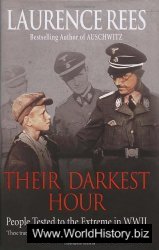During the epoch of the Empire, i. e. between 1871 and 1918, there were two distinct periods, starting with the long period of peace prior to 1914. During this time, we see military-diplomatic attache relations as were common in the European world of states before 1914, i. e. relations with a good number of personal contacts, with regular reciprocal officers’ exchanges, even after the deterioration of political relations in the 1890s. The same applies to the other great German power, the Austro-Hungarian Empire. Young officers frequently travelled within their own armies before starting their general staff duties in order to improve their knowledge of languages. A prominent example was Erich Ludendorff, who travelled to Russia in 1894 immediately before taking up his duties at the Great General Staff (Grofer Generalstab) and reported on this three month’s stay in his later military memoirs.1 The Russian side also had a number of well-known military staff of the First World War, who had spent time in Germany or other European countries before 1914.2 According to the old military and dynastic bonds in both armies, sister units existed, as the legendary Alexander-Regiment in Berlin (named after Tsar Alexander I of Russia) and its Russian counterpart, the King Friedrich-Wilhelm von PreuBen Regiment.
During the decade before the First World War Russia’s military structure showed some conspicuous similarities to the German system, especially in respect of the central military apparatus. After losing the war against Japan in 1905 the general staff was released from its subordination to the Ministry of War and, following the Prussian-German example, became an independent institution immediately placed under the Emperor.3 The right of direct report was introduced for a considerable number of inspectors for each branch of the services, and for the heads of military districts, who were similar to the German Generalkommandos and were simultaneously governor-generals over their respective regions. To sum up it can be said that, as in Germany, the Russian system suffered from a multiplicity of officers with access to the throne and a lack of communication and coordination among them.4 Under the Chief of Staff, General F. F. Palitsyn, a protege of the Tsar’s uncle Grand Duke Nicholas, from 1906 on German military thinking, especially in the operational field, exerted considerable influence on the younger Russian staff officers who were graduating from the imperial general staff academy at this time.5
The years 1914 to 1917 represented a phase of military conflict in the overall context of the First World War, whilst maintaining a sufficiently active diplomacy to achieve an armistice in December 1917 and a peace agreement in March 1918, the Treaty of Brest-Litovsk, with Russia’s new Bolshevist regime.
Moving on to the Third Reich after 1933. Nazi Germany saw three very different phases: the years 1933 to 1938 were a time of very fast-moving political alienation which, with the beginning of the Spanish Civil War in 1936, turned into a kind of cold war, i. e. a state of political tension and a growing propaganda war on both sides. There was no longer sufficient trust to sustain national securityrelevant military cooperation, and military relations reverted to routine or restricted attache liaison meetings.6
The years 1939 to 1941 were a period of intense economic relations of strategic significance and a considerable transfer of military technology from Germany to Russia.7 These were not so much due to the neutrality and non-aggression pact of 23 August 1939, but began with the ‘Frontier and Friendship Agreement’ (Grenz-und Freundschaftsvertrag), dated 28 September of the same year, following the joint occupation and separation of Poland. Never before or after did Germany and Russia have such close economic relations as during this short period between 1939 and 1941.8
Finally, the years 1941 to 1945, as is well known, were marked by an uncompromising and total war of extermination lasting nearly four years, during which there was a complete inability to even begin to apply politics and diplomacy as was done during the First World War.




 World History
World History

![The General Who Never Lost a Battle [History of the Second World War 29]](/uploads/posts/2015-05/1432581983_1425486253_part-29.jpeg)







